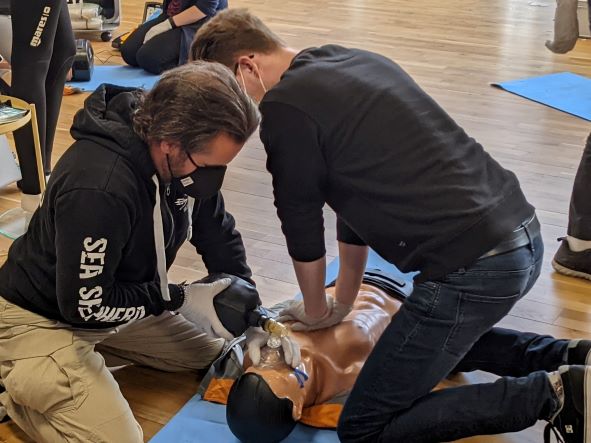When Black and Hispanic Americans experience apparent cardiac arrest, they are far less likely than white counterparts to receive bystander aid through cardiopulmonary resuscitation (CPR), says a recent study to be presented Sunday at the American College of Cardiology conference.
The study, as reported by Day To News, shows that when experiencing a cardiac arrest in public, Black and Hispanic people are 41% less likely than white people to receive CPR, a life-saving measure that immediately increases the patient’s chances of surviving with full brain function by two to three times.
According to Medical News Today, a cardiac arrest refers to the sudden stoppage of the heartbeat, impeding blood supply to the rest of the body.
Public cardiac arrests comprise the majority of the 1,000 instances of the disease experienced by Americans every day, yet when Black and Hispanic people experience cardiac arrests inside their home, they remain 26% less likely than white people to receive CPR, per the study.
Examining data from over 110,000 cardiac arrests that people experienced nationwide from 2013 to 2019, researchers determined that while 46% of Black and Hispanic people received CPR for public cardiac arrests, CPR was provided to 60% of white people in the same situations, per Day To News.
Additionally, while 39% of Blacks and Hispanics received CPR at home during cardiac arrests, 47% of whites received the aid when experiencing cardiac arrest out of the public eye, the outlet reported.
While the research team for this study did not examine the social or systemic influences of the disparities, according to Medical News Today, they suspect that racial biases may be behind the ongoing issue.
Bystander CPR for out-of-hospital cardiac arrest was performed less frequently for Black and Hispanic individuals vs. white individuals, irrespective of neighborhood demographics and income @MidAmericaHeart #ACC22 @ACCinTouch #Cardiotwitter https://t.co/wb0uD5Ey0N
— Cardiology Today (@CardiologyToday) April 2, 2022
Dr. Paul Chan, professor of medicine at the University of Missouri and lead author of the study, told Day To News: “We need to think creatively about how to offer CPR training to vulnerable populations who have not been trained historically, and focus on providing additional training in communities where inequalities are greatest.”
Per the outlet, researchers found that these disparities persisted for Black and Hispanic people regardless of whether they lived in a high-income or low-income neighborhood with predominantly white, Black or Hispanic populations.
“These findings raise questions about whether simply increasing CPR training in Black and Hispanic communities is sufficient, as Black and Hispanic individuals with a cardiac arrest in Black/Hispanic communities were still less likely to receive potentially life-saving CPR than white individuals in these communities,” Chan told Medical News Today.
He said that while there remains a ways to go in terms of increasing CPR education among all racial groups, ongoing disparities for communities of color will need to be addressed specifically by medical organizations and training service providers.
“Organizations [that] conduct CPR training to the lay public (American Heart Association and American Red Cross) will first need to make CPR training more accessible to low-income and non-white communities. This includes waiving training fees and conducting training in non-traditional settings (e.g., Black churches, Hispanic community centers),” he told the outlet.
Story Credit: Thegrio Staff
Photo Credit: Martin Splitt/Unsplash



































